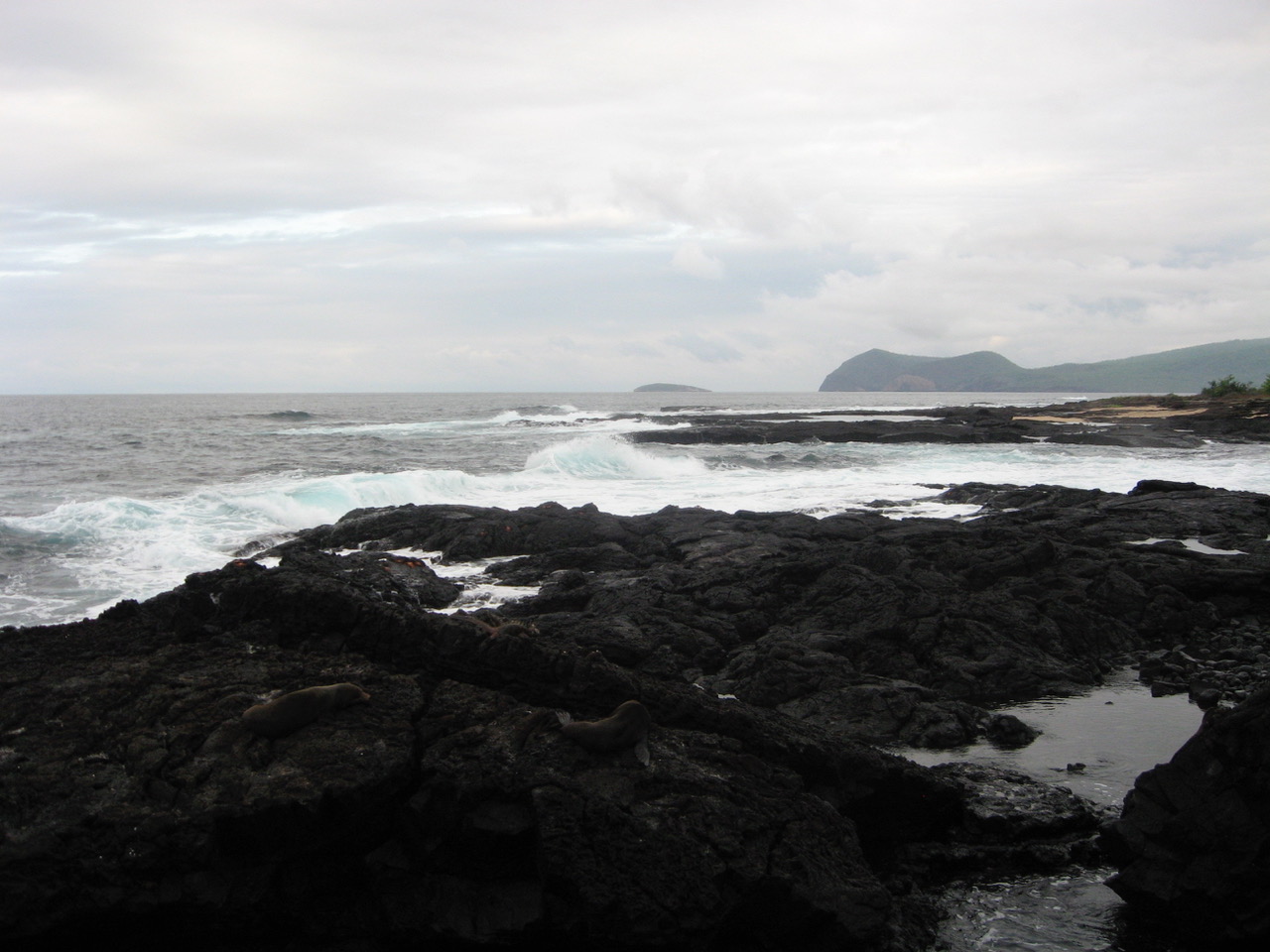

|
The Equatorial Pacific Ocean cold tongue and the Galapagos Islands. Photo By: Richard Seager Strengthening tropical Pacific zonal sea surface temperature gradient consistent with rising greenhouse gases - Nature Climate ChangeBy: Richard Seager, Mark A. Cane, Naomi Henderson, Dong-Eun Lee, Ryan Abernathey, and Honghai Zhang The sea surface temperature of the equatorial Pacific Ocean plays an outsize role in influencing climate variations worldwide. During La Niña events the eastern and central equatorial Pacific becomes colder than normal setting in motion a global rearrangement of atmospheric circulation that brings drought to southwest North America, southeast South America and East Africa and wet conditions to the Sahel and northern South America. This powerful influence on regional climates of equatorial Pacific sea surface temperatures (SSTs) makes important how they respond to rising greenhouse gases. The last few generations of the state-of-the-art climate models used in IPCC assessments essentially unanimously predict that the equatorial Pacific will warm and by more than the rest of the tropical Pacific Ocean. However, trends in SST evaluated from ship, buoy and satellite data show the eastern to central equatorial Pacific Ocean has actually not warmed over the historical period and, if anything, has cooled. We first pointed this out in Cane et. al. (1997) but the reasons for the discrepancy between models and observations has perplexed the climate research community for the past two decades. Now, in a new paper, we make the bold claim that Nature is right and the models are wrong - and explain why. As the trade winds blow from east to west across the tropical Pacific, because of the rotation of the Earth, they push the water northward in the northern hemisphere and southward in the southern hemisphere. This "pumps" water upward and, since the water below the surface is cold, creates a "cold tongue" of water that extends along the Equator from the coast of South America to the dateline. West of the dateline the cold water is well below the surface and the surface waters are warm. Since the state-of-the-art models all erroneously predict that this cold tongue should have warmed over past decades, we turned to much simpler models of the tropical atmosphere and ocean. The simpler models incorporate the fundamentals of the dynamics and thermodynamics of the system but, importantly, due to their simplicity and design, can be used to test how the tropical Pacific response to rising GHGs depends on how well the long term mean climate of the tropical Pacific is simulated. When we assume in the simple model that the mean climate is exactly as observed, the tropical Pacific responds to the rise in GHGs over the past decades by warming everywhere except in the cold tongue which slightly cools. This >is just like the observations. The reasons are simple. In the cold tongue, upwelling of cold water effectively opposes the warming due to rising GHGs so this region warms by less than the west Pacific. Warming by more in the west than the east causes more precipitation over the western warm pool and strengthens the trade winds. In turn the stronger trades lift the cold subsurface water upward further cooling the cold tongue. Hence, the lack of cold tongue warming is a consistent response of the coupled tropical Pacific atmosphere and ocean to rising GHGs.
So why do state-of-the-art models do the opposite and warm the cold tongue? We show that the problem lies with the biases in how the models simulate the mean climatological state of the tropical Pacific Ocean. For reasons that remain largely unresolved, state-of-the-art models have cold tongues that are too cold and extend too far west and also have a spurious strip of warm water to their south. These biases create in the models an equatorial climate that has too high relative humidity and too low wind speed. Both of these errors tend to make the SST very sensitive to rising GHGs. When we make our simple model have a climatological state like that in the state-of-the-art models it responds to rising GHGs with the cold tongue not only warming but warming more than elsewhere. That is just like in the state-of-the-art models -- those models get the wrong response to rising GHGs because they simulate the climatological state of the tropical Pacific poorly. Why does this matter? Just as changes in SST during El Niño and La Niña events effect climate globally, regional climate change will be impacted by whether the equatorial Pacific cold tongue warms or cools. Regional climate change is influenced by many things with, in terms of hydroclimate, the general warming of the atmosphere tending to make dry subtropical regions drier and wet tropical and mid-latitude regions wetter. However, on top of those changes there will be regional changes driven by changes in cold tongue SSTs. If, contrary to the state-of-the-art models, the cold tongue does not warm in response to rising GHGs, we will expect southwest North America, southeastern South America and East Africa to evolve drier than projected by those models and the Sahel and northern South America to evolve wetter than projected. As such, climate impact assessments in these and other regions of the world sensitive to equatorial Pacific Ocean temperatures should not assume that the projections of state-of-the-art models are correct and should instead consider the consequences for regional climate of continued cool temperatures in the cold tongue. The work highlights the urgent need to improve how well state-of-the-art models simulate the tropical Pacific so that the next generation of models can more reliably simulate how it responds to rising GHGs and how that impacts climate change worldwide. table <Links:
References:
Acknowledgements:This work was begun with support from the World Surf League P.U.R.E. via the Center for Climate and Life at Columbia University and continued with National Science Foundation award OCE-1657209 |